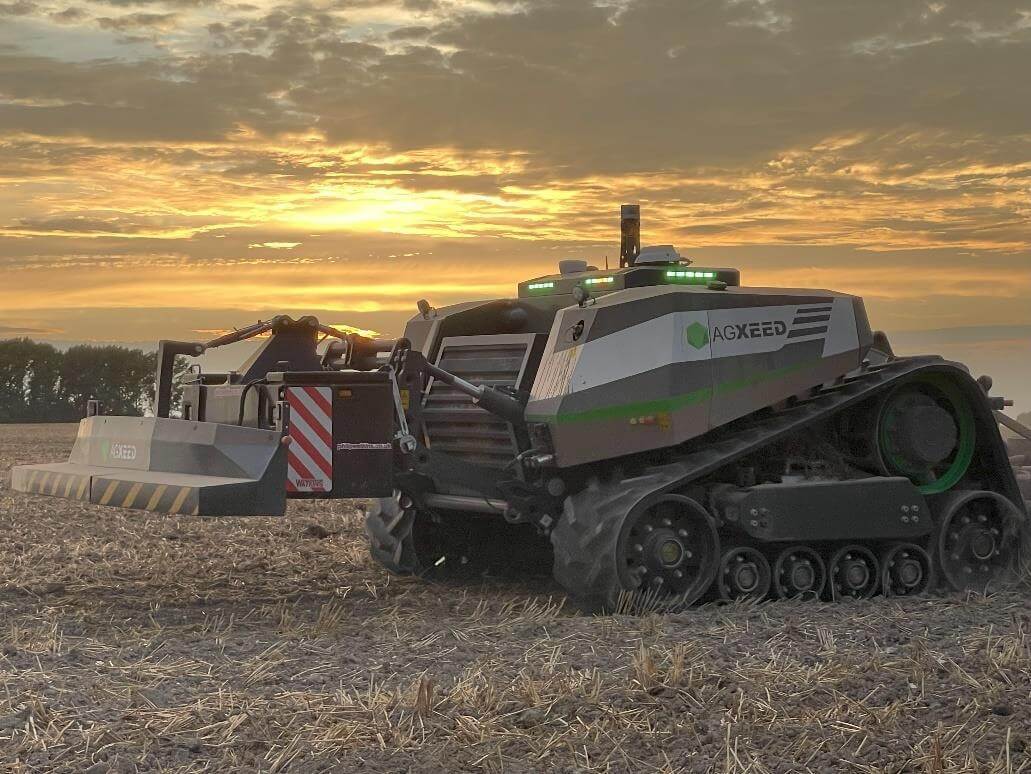Insight Focus
New soil scanning and mapping technology will enhance yield insights. However, wheat and barley yields remain disappointing amid regulatory and weather challenges.
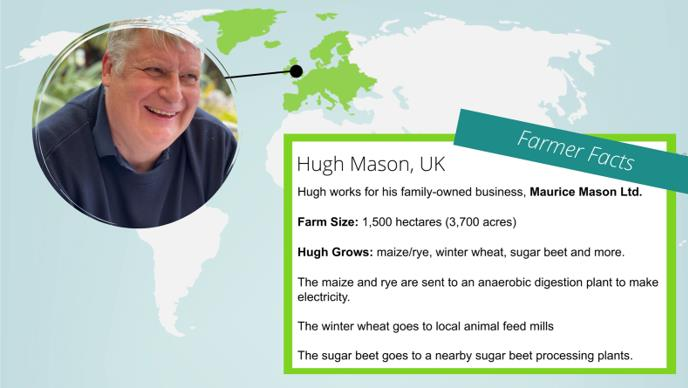
What’s Happening on the Farm?
I must talk about Arthur.

He hasn’t taken any paternity leave yet and ignored all bank holidays. However, due to an IT upgrade, telegraph poles have become a problem. As soon as he sees one, he gets all “anxious” and goes to sleep. I have to admit, in his favour, last year a third-party contractor knocked a pole over on a bank holiday. It seems that the upgrade gave him too much to think about.
I am cynical, but even I know to never change the software when you are using the computer. However, what we have learnt is that, if he is given a simple task, he will perform it better than a human can. This is opening up interesting avenues of cultivation that may well increase yield, if we can understand them.
As mentioned last month, we have just received a soil scanning device that should allow us to explore a number of different aspects of our “shop floor”. We have to install new mapping software (I plan to be on holiday when this happens), but then we will start to analyse our soils in even greater detail.
The aim of all of this is to increase yield. Before the state bans us from spreading. We’ve started applying manures of one sort or another. Many calculations are required to ensure that we do not breach increasingly complicated rules and regulations. After that, our autumn cultivations start. It’s now all about harvest ’25.
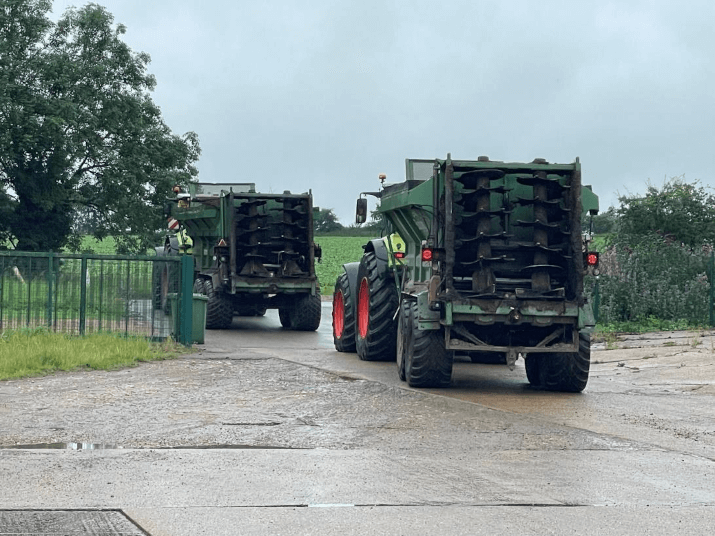
And just to keep me in touch with reality, the annual ploughing competition was held last weekend in brilliant sunshine. It still never ceases to amaze me where all these machines come from and how much enjoyment they give.
What Stage are the Crops at?
Wheat/Rye
The wheat harvest started on August 5 which, with the exception of two years, is when we normally start. We finished on August 31, which is a couple of days earlier than normal. This can be put down to a higher area of spring barley compared with normal. Yield is lighter so the combine travels over more acres in a day.
Wheat yield was awful in comparison with our trend yield. What is strange is that the plant and ear counts are roughly where we would hope they would be, despite a most miserable growing season.
In case anyone has forgotten, the autumn/winter was the wettest in living memory. This implies that our spring activities, including nitrogen applications, were somewhere near correct – if there is such a thing. I can only deduce therefore that the yield loss was due to the miserable early summer where we didn’t get the sunlight.
Moisture was not an issue through the growing season. I suppose on the positive side, if we had had a drought, as I have been forecasting since we came back to work after Christmas, we would have had no wheat at all.
Spring barley, harvested between the wheat as it came fit, made wheat look good, which I find even more strange as I could not find fault with how the farm grew the crop. Plant/ear counts were even more “on the money” than wheat.
Both crops are now being deeply analysed to try and understand what went right and what went wrong. We are encouraged by the government to analyse grain nutrient, after which it can tell us what we’ve done wrong. Very helpful.

OSR
As mentioned last month, we have gone back into this crop. Personally, I’m glad because I like growing it. Planted very early, it has come up and grown. I’m advised you plant either really early or very late. Do not plant on August 20, which is the traditional planting date for us, when cabbage stem flea beetle is on the move.
This year we planted using a sugar beet drill, basis 50cm rows. The idea was that we would be able to practice band-spraying insecticides, in preparation for a neo-nic ban on sugar this coming year. As yet, we have not needed to spray an insecticide.
More generically, I expect the national acreage to drop again for harvest ’25 as we all try to grow the wheat crop we didn’t this year.
Sugar Beet
In a growing sense, August is a relatively quiet period for us. Much to my delight, the processor has announced the closing date for our factory as well as the starting date. It always makes me think that the
processor doesn’t really appreciate that I’m busy in August and the thought of churning through mud in January/February is not something I want to think about in August when the soil is so dry that I won’t be able to lift a beet. Its drier than this time last year.
Disease levels have appeared to be low, and our crop has remained green. We have sprayed a second fungicide in part because the lifting season will be so long and sugar levels can be greatly increased in September and October, if the plant is healthy.
So, this begs the question, what will go wrong this year? There is always something new.
Projecting the weather forward and I am seriously worried about a repeat of last autumn. So far, forecasts suggest a kinder autumn, which may make this a better crop.
What are your Biggest Concerns?
“Could be worse though….” ah yes, it has got worse.
The Department for Environment, Food & Rural Affairs (DEFRA), which has 34 agencies and bodies dedicated to the task of stopping things, has opened up its new Sustainable Farming Incentive volume two.
DEFRA has told us that its new system is so simple, we would be able to do it ourselves, “over the kitchen table.” Someone might have commented that allowing “offers of interest” in July and August may demonstrate a complete lack of understanding over how farmers work. An arable farmer might be busy and a livestock one might be taking a holiday at the quietest time of the year. But if you work from home most of the time you wouldn’t be able to observe this.
We rang DEFRA to be told it was a little busy and so didn’t want to take our call, but it would ring us back. We’ve got Cecelia manning the phone as I don’t have enough staff to set a rota for the anticipated phone call. Our second approach was to instruct a Land Agent to help. I’m cheerfully told that if I am a hobby farmer, I will be welcomed in immediately — good for the stats. But if I’m a working farmer I would stand a better chance of being a bat flying round in a very hot place, in the afterlife.
At the beginning of the month the new government told us regeneration is the way forward (I only know of Doctor Who that can do that). I went and looked at the stats. Before fertilizers and pesticides came into use, the average yield in the UK was 2.4 tonnes/ha, which doubled with the use of bagged fertiliser. Joining the EEC and an advancement in research and understanding spot yield peaked at 9 tonnes/ha and is now on the decline at 7.9 tonnes/ha.
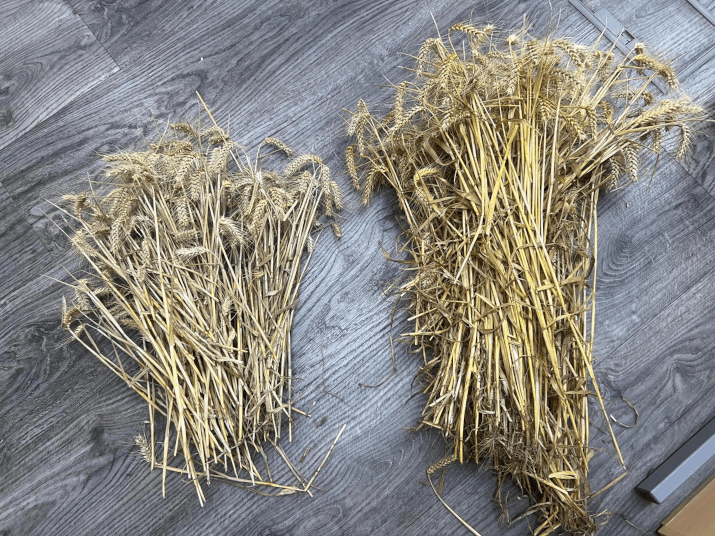
We are involved with an EU funded programme to understand how to improve wheat yield. It’s a good project, with involvement from countries as far North as Denmark (who are arguably leading the way on the clampdown on the use of fertilisers) to Portugal and all points in between.
We have run “No nitrogen” plots (i.e. yield only coming from the nitrogen in the soil) versus “standard practice.” Results say that typically the use of nitrogen doubles yield.
In the regenerative era, before the war, we yielded 2.40 tonnes/ha. Today our trials show 6.2 tonnes/ha with no nitrogen and 12.7 tonnes/ha with nitrogen.
We have not destroyed our soils with modern farming practices, but as the government micro-manages farming yields will drop because production of food is of no interest.
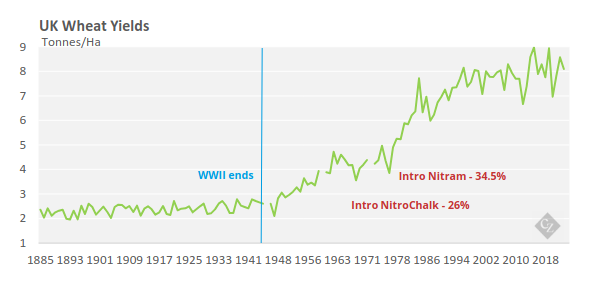
Source: DEFRA
I fear we have a decade of decay in front of us, for my style of farming.
